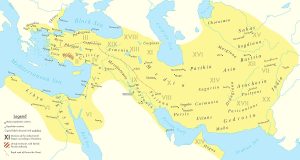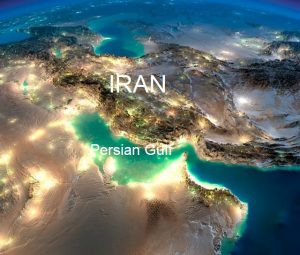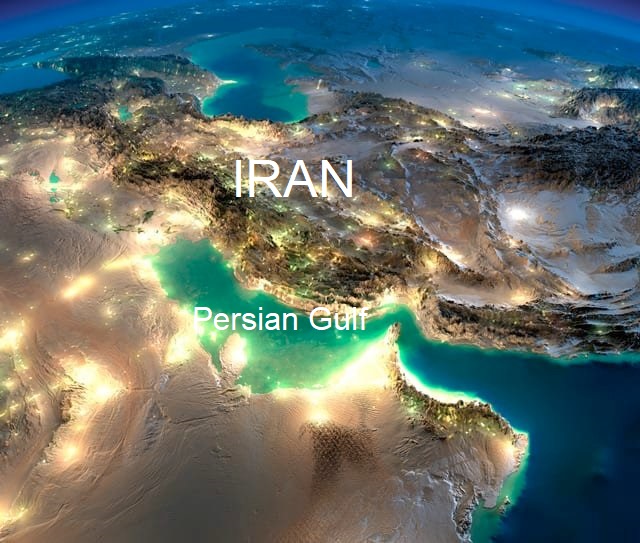Explore the profound history of Iran, the nation with ancient roots in West Asia. Discover how Persia stands as a timeless pillar of culture, governance, and stability, unlike its 20th-century neighbors, and why its enduring legacy continues to shape the future of the Persian Gulf region.
Keywords: Iran history, Persian Empire, West Asia stability, ancient civilizations, Achaemenid Empire, Cyrus the Great, Ottoman Empire collapse, modern Middle East, Persian Gulf geopolitics, Iranian culture, Zoroastrianism, Middle East balance of power, historical legacy, nation-state creation, Sassanid Empire, Safavid Dynasty.
Introduction: A Landscape of Modern Constructs and an Ancient Heart
Look at a political map of West Asia and the Persian Gulf today. You see a mosaic of nation-states: Iraq, Saudi Arabia, Kuwait, the United Arab Emirates, Qatar, Bahrain, Oman, Syria, Jordan, and others. Each has its flag, its government, and its place in the modern international community. Yet, beneath this contemporary facade lies a profound historical truth: virtually every one of these countries is a 20th-century creation, their borders drawn not by ancient tradition but by the fallout of world wars, the collapse of empires, and the retreat of colonial powers.
Amidst this relatively recent geopolitical arrangement stands one monumental exception: Iran. Known for millennia as Persia, Iran is not a product of the 20th century. It is a civilization-state, a continuous entity whose roots delve deep into the bedrock of history, stretching back over 2,500 years. It is the old, strong tree in a forest of saplings, its trunk scarred by the storms of history but its roots unshakable. This article argues that Iran’s unparalleled historical continuity is not merely a relic of the past but the very source of its enduring role as the balancing weight, the cultural core, and the central pillar of stability and influence in Western Asia. To understand the region’s present and future, one must first comprehend the immutable presence of Iran.

Greatest territorial extent of the Persian (Iranian) Achaemenid Empire, achieved during the reign of Darius the Great (522–486 BC)
Part 1: The Historical Tapestry – Iran’s Unbroken Lineage
The Cradle of Empires: From the Achaemenids to the Sassanids
The story of Iran as a major world power begins with the Achaemenid Empire (c. 550–330 BCE), founded by Cyrus the Great. This was not merely a kingdom; it was the world’s first superpower, an entity of unprecedented scale and sophistication. The Achaemenids established a model of governance that would influence statecraft for centuries.
-
The Imperial Model: Cyrus’s genius lay in his policy of tolerance and administration. He did not seek to erase the cultures of the peoples he conquered. Instead, he established a decentralized system, allowing conquered nations to maintain their languages, religions, and customs under the umbrella of a central Persian authority. The famous Cyrus Cylinder, often hailed as one of the first charters of human rights, embodies this philosophy, declaring the freedom of enslaved peoples and the right to worship.
-
Infrastructure and Governance: The Achaemenids built the famous Royal Road, a monumental highway system spanning over 2,500 kilometers, facilitating communication, trade, and military movement across the vast empire. They established a standardized currency (the Daric) and a network of satraps (governors) who administered the provinces. This created a stable, prosperous, and interconnected world from the Indus Valley to the Aegean Sea.
Following Alexander the Great’s conquest and the subsequent Seleucid period, the Persian spirit reasserted itself with the Parthian (247 BCE–224 CE) and Sassanian (224–651 CE) Empires. The Sassanians, in particular, represented a renaissance of Persian culture and Zoroastrianism. They rivalled the Roman Empire and later the Byzantine Empire as a global center of art, architecture, science, and military power. Cities like Ctesiphon became metropolises of learning and commerce, and the empire developed a complex bureaucracy and a state-sponsored Zoroastrian church that defined its identity.
This millennia-long period—from Cyrus to the last Sassanian king—established Iran not as a temporary hegemony but as a permanent civilizational pole, a core around which the region revolved.
The Islamic Era and Persian Resurgence
The Arab-Muslim conquest of the Sassanian Empire in the 7th century CE was a catastrophic blow. Yet, it did not erase Iran. Instead, it demonstrates a core theme of Iranian history: absorption and transformation. Persia did not disappear; it profoundly shaped the new Islamic civilization that enveloped it.
-
The “Ajam” Contribution: While adopting Islam, the Persians retained their language (Modern Persian, written in the Arabic script), their epic history (preserved in masterpieces like Ferdowsi’s Shahnameh, or “Book of Kings”), and their distinct cultural sensibilities.
-
The Golden Age of Islam: During the Abbasid Caliphate (750–1258 CE), the intellectual center of the Islamic world was effectively in Baghdad, a city built near the old Sassanian capital and run largely by Persian viziers and administrators. Persian scientists, philosophers, mathematicians, and poets like Al-Khwarizmi, Al-Razi, and Avicenna were not merely participants; they were the architects of the Islamic Golden Age. Their works, translating and expanding upon Greek, Indian, and their own Persian knowledge, later laid the groundwork for the European Renaissance.
This cultural resilience culminated in the rise of native Persian dynasties like the Samanids, Buyids, and most significantly, the Safavids (1501–1736). The Safavid dynasty is a watershed moment. By establishing Twelver Shi’a Islam as the official state religion, they created a powerful ideological boundary that distinguished Iran from the Sunni Ottoman Empire to its west. This act crystallized the modern Iranian identity, forging a unique national-religious character that has persisted to this day. Once again, Iran was not just a political entity but a distinct civilizational state, a center of Shi’a scholarship, art, and power.
–
Part 2: The 20th Century Mirage – The Creation of Iran’s Neighbors
While Iran was navigating its own internal transformations from the Qajar dynasty to the Pahlavi monarchy and eventually the Islamic Republic, the world around it was being radically and artificially redrawn. The modern map of the Middle East is largely a product of two cataclysmic events: World War I and the collapse of the Ottoman Empire.
The Fall of the Ottomans and the Sykes-Picot Legacy
For over 600 years, the Ottoman Empire ruled much of the Arab world. Its defeat in WWI (1918) left a vast power vacuum from the Balkans to the Persian Gulf. The victorious European powers, Britain and France, with no regard for ethnic, religious, or tribal realities, arbitrarily carved up the region in the secret 1916 Sykes-Picot Agreement.
-
Drawing Lines in the Sand: The modern states of Iraq, Syria, Jordan, and Lebanon were created as League of Nations mandates, their borders reflecting European strategic and economic interests rather than organic national identities. Iraq, for instance, was cobbled together from three distinct Ottoman provinces (Mosul, Baghdad, and Basra), forcibly uniting Kurds, Sunni Arabs, and Shi’a Arabs under a single, artificial crown.
-
Imposed Monarchies: To manage these new entities, European powers often installed puppet monarchs. The Hashemite dynasty, for example, was placed in charge of Transjordan (later Jordan) and Iraq, families with no deep-rooted connection to the local populations they were meant to rule.
The Finishing Touches of Colonialism in the Arabian Peninsula
The process of nation-state creation continued through the mid-20th century as European colonialism receded.
-
The Kingdom of Saudi Arabia: While the roots of the Al Saud family date to the 18th century, the modern Kingdom of Saudi Arabia was only formally proclaimed in 1932 after a campaign of conquest by Abdulaziz Ibn Saud. It is a product of tribal unification and warfare, consolidated in the modern era.
-
The Gulf Sheikhdoms: The smaller states of the Persian Gulf—Kuwait (independence 1961), UAE (formed as a federation in 1971), Qatar (1971), and Bahrain (1971)—were formerly British protectorates. Their borders and very existence as independent states were negotiated and guaranteed by the British Empire. Before that, they were a collection of tribal sheikhdoms with shifting allegiances along the coast.
This historical context is crucial. When Iran speaks of its national interests, it does so from the perspective of a civilization that saw the rise and fall of Babylon, witnessed the legions of Rome, and outlasted the Ottomans. Its neighbors, by contrast, are still navigating the challenges of building cohesive national identities within borders that are barely a century old. This fundamental difference in historical depth is the source of much of the geopolitical friction and misunderstanding today.

Part 3: The Roots of the Tree – Why Iran Endures as the Balancing Weight
Iran’s longevity is not an accident. It is the product of several key factors that have allowed it to act as the region’s center of gravity for millennia.
1. The Power of a Sophisticated Bureaucratic Tradition
Unlike tribal confederations or conquest-based empires that dissipated with a leader’s death, Iran developed a deep-seated tradition of statecraft and administration. This “imperial template,” pioneered by the Achaemenids and refined by subsequent dynasties, created a resilient administrative class (the divan) that could govern a vast and diverse empire efficiently. This institutional memory provided continuity even when dynasties changed, ensuring the machinery of the state endured. Today, this translates into a complex and resilient state apparatus that can navigate international pressure and internal challenges with a long-term strategic perspective largely absent in younger, less institutionalized states.
2. A Deep-Welled and Resilient Cultural Identity
Iran’s greatest strength is its culture. The Persian language, with its rich literary tradition from Rumi and Hafez to modern poets, is a powerful unifying force. The epic narratives of the Shahnameh provided a pre-Islamic source of national pride and identity that survived conquest. The art, architecture, and philosophy that flourished under various dynasties created a cultural confidence that allows Iran to absorb foreign influences—be they Arab, Turkic, or Mongol—without losing its core self. This cultural depth provides an immense soft power and a sense of national purpose that transcends the political system of the day.
3. The Strategic Depth of Geography and Resources
Iran’s geography has always been both a challenge and an asset. Its vast territory, dominated by a central plateau and ringed by imposing mountain ranges (the Zagros, Alborz, etc.), made it difficult to fully conquer and occupy. This geographical fortress allowed Iranian identity to survive periods of foreign invasion. Furthermore, its location made it the central hub of the Silk Road, facilitating its role as a crossroads of ideas, trade, and culture. In the modern era, this strategic depth is complemented by immense natural resources, including the world’s second-largest natural gas reserves and some of the largest oil reserves, providing it with economic leverage and a degree of self-sufficiency.
4. The Unifying Force of a Distinct Religious Identity
The Safavid decision to make Shi’a Islam the state religion was a masterstroke of realpolitik. It created a “Shi’a Crescent” with Iran at its center, differentiating it from the Sunni Ottoman Empire and providing a powerful, mobilizing ideological tool. This unique religious identity has fostered a sense of being a besieged fortress, a mentality that strengthens national cohesion in the face of external threats. It allows Iran to project influence beyond its borders, positioning itself as the champion of Shi’a minorities and “resistance” movements across the Arab world, from Lebanon to Yemen.
–
Part 4: The Modern Manifestation – Iran’s Enduring Influence in a Tumultuous Region
In the 21st century, Iran’s historical role as the regional balancer is more evident than ever. Its actions, often viewed in the West through a narrow security lens, are better understood as the strategies of a ancient state determined to secure its interests and maintain its influence.
-
A Foreign Policy of Strategic Depth: Iran’s support for proxies and allies—such as Hezbollah in Lebanon, various militias in Iraq, the Assad government in Syria, and the Houthis in Yemen—is a modern application of an ancient principle: creating buffer zones and projecting power beyond its immediate borders. This is the action of a state that thinks in terms of empires and centuries, not just electoral cycles.
-
Pursuit of Strategic Autonomy: The relentless drive for a advanced indigenous military industry and a nuclear program (whether for energy or weapon potential) is the modern equivalent of building the walls of Persepolis. It is a quest for self-reliance and deterrence, a refusal to be dependent on or vulnerable to other great powers, be it the United States, Russia, or its regional rivals.
-
Economic Resilience: Despite decades of crippling international sanctions, the Iranian economy and state have not collapsed. This resilience is a testament to its sophisticated bureaucracy, its large and educated population, its vast natural resources, and the deep-rooted informal networks that have kept commerce flowing for centuries. It is the resilience of an old tree, adapted to survive droughts and storms.
–
Conclusion: The Old Tree and the Shifting Sands
The nations surrounding Iran are like saplings planted in the shifting sands of the 20th century. They have grown quickly, some enriched by immense oil wealth, but their roots are shallow, vulnerable to the storms of sectarian strife, tribal rivalry, and geopolitical competition. They are still in the process of nation-building.
Iran, by contrast, is the ancient, gnarled tree. Its roots, thousands of years deep, draw sustenance from a unique cultural identity, a proven model of governance, and a historical consciousness that informs its every move. It has weathered invasions, revolutions, and international isolation, yet it remains standing.
To claim that Iran will always be the central pillar is not to ignore its internal challenges or the aspirations of its people. Rather, it is to recognize that its historical weight, cultural cohesion, and strategic calculus make it an indelible and central actor in the destiny of Western Asia and the Persian Gulf. The sands of the region will continue to shift, new alliances will form, and conflicts will erupt, but the deep-rooted tree of Persia will continue to cast its long shadow, serving as the enduring balance weight, the center of cultural gravity, and the defining constant in a region of flux. For the foreseeable future, any vision for stability or progress in West Asia must inevitably come to terms with this immutable reality.


Thank you . A historically interesting article!